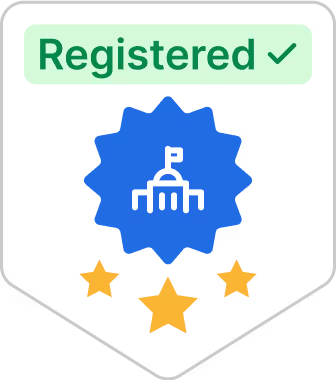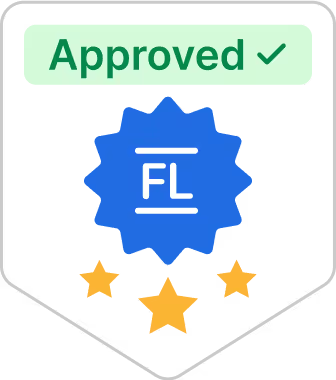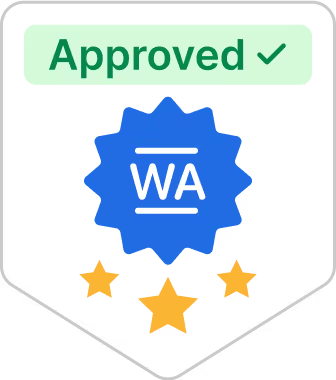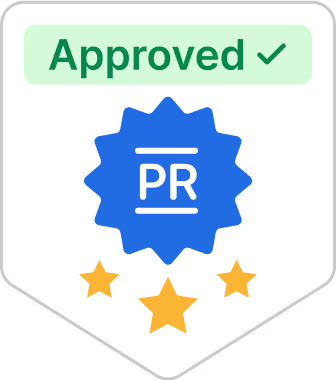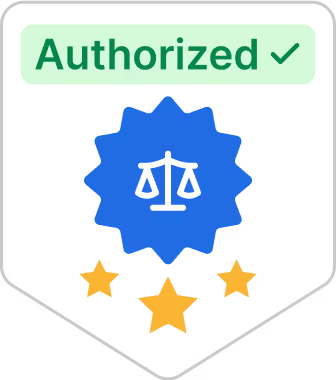How to start a nonprofit organization

What does nonprofit mean and what’s the difference between a nonprofit and a not for profit? Nonprofit organizations are created to provide resources or services without the intention of making a profit. On the other hand, a not for profit organization does not operate with a goal of earning revenue.
So, if you have a unique mission to serve the public good and the passion to get it off the ground, you may be ready to learn how to set up a nonprofit organization.
As you begin the planning process, consider:
- What specific need you’ve identified and how your nonprofit will respond to it
- Who will benefit from the solution and why they need it
- What kind of funding your nonprofit will rely on
- Who will be needed to help set up and run your nonprofit
Let’s take a look at 6 key steps in how to start a nonprofit organization.
#1 Define your mission
Start by writing a clear mission statement. What is the unique and specific purpose of your nonprofit?
You will need to describe the mission of your organization to many audiences, from applying for nonprofit standing, to grant writing, to getting donors and volunteers on board. This means you’ll need to be able to share the what, when, where, who, why, and how of your mission in clear, simple language.
#2 Name your nonprofit
A name is both a legal requirement and an important part of your branding and communication plan. Brainstorm, use a thesaurus, and consider how other successful nonprofit organizations like charitable nonprofits have been named. Your nonprofit organization’s name should be:
- Unique and not already trademarked
- Easy to remember and spell
- Part of communicating your organization’s mission
- Available as a website domain name
Your state may require including a designation (such as “incorporated” or “limited”) to the name; check with your Secretary of State.
#3 Build your team
The right people will make all the difference in fulfilling your nonprofit’s mission. Start planning for the following:
- Board of directors
- Staff
- Volunteers
One of the most challenging concepts as a founder is to understand that once you set up a nonprofit association, you are no longer in control of it. Nonprofits are governed by a voting board of directors—so choose carefully!
The board of directors
The nonprofit board members are the backbone of a nonprofit organization. They help shape the future of the organization and provide guidance to its leaders.
Ask yourself what are the skills you need to achieve your goals. You need to make sure that the people on your board have the know-how, availability, and willingness to help you achieve those goals.
Board member responsibilities vary depending on their role in the organization but can include fundraising, recruiting, and providing expertise. Above all, they should be passionate about your organization’s mission.
Staff
Depending on your organization’s size and scope, board members or volunteers may take a more active role in covering essential tasks and skills. Consider what paid positions are possible with your initial budget to cover:
- Financial, accounting, and general bookkeeping
- Strategic planning and budgeting
- Marketing
- Fundraising
- Technical skills and support
Volunteers
Nonprofits may need volunteers to help with a variety of tasks. There are many ways to find the right volunteers for your organization, such as:
- Posting volunteer opportunities on social media and job boards
- Partnering with churches, schools, or business associations
- Connecting with local organizations that have similar missions
- Word of mouth from current volunteers
#4 Incorporate with your state
There are many ways to create a nonprofit organization, but the most common is to incorporate it with your state government.
To do this, you will need to file nonprofit articles of incorporation with the Secretary of State office. Nonprofit articles of incorporation must contain certain information that is specific to your type of organization like a charitable organization, such as the name, purpose, and address of the organization, as well as declarations related to nonprofit status.
Note for fundraising purposes, you will also need to register with each state where you intend to attempt to raise funds.
If you’re wondering “can an LLC be a nonprofit,” the answer is yes. However, this form of organization cannot be assigned a tax exemption and a non profit EIN number directly. Plus, the LLC must comply with a lot of requirements to get this status.
#5 Register for tax-exempt status
To obtain the coveted federal tax exempt status that is a key part of starting and running a nonprofit association, you will need to file IRS Form 1023 to become a recognized 501(c)(3) organization. This is a 28-page document, requiring enough schedules and attachments that it can easily clock in at over 100 pages.
The IRS will want detailed information on your planned programs, purpose, and structure, and they will be reviewing it with an eagle eye—granting federal tax exemption is something the government does not take lightly.
Some states also require their own paperwork to receive tax-exempt status at the state level. This is an important step, covering both property tax and state and local sales tax exemption.
#6 Plan for funding
An early consideration for any nonprofit startup is how to fund it. Common sources of funding are:
- Donations from individuals, foundations, corporations
- Government grants
- Membership dues
- Fundraising events
- Crowdfunding
- Program fees
- Partnerships and collaborations with other types of nonprofits like charitable nonprofits
Ready to start a nonprofit?
Learning how to set up a nonprofit organization is an exciting and valuable undertaking. But it’s not without challenges! The best way to approach the process is by breaking it into small steps and taking advantage of tools and tips that can help you. Simply fill out this EIN form to apply for a nonprofit online right now.
Sources:
- DonorBox. How to Start a Nonprofit Organization. https://donorbox.org/nonprofit-blog/start-a-nonprofit
- The Blueprint. 11 Essential Steps to Start a Nonprofit. https://www.fool.com/the-ascent/small-business/document-management/articles/how-to-start-a-nonprofit/
- Walters Kluwer. How to start a nonprofit organization. https://www.wolterskluwer.com/en/expert-insights/how-to-start-a-nonprofit-organization
- National Council of Nonprofits. State Filing Requirements for Nonprofits. https://www.councilofnonprofits.org/tools-resources/state-filing-requirements-nonprofits
- DonorBox. The Complete Guide to Registering a 501c3 Nonprofit. https://donorbox.org/nonprofit-blog/how-to-start-a-501c3












